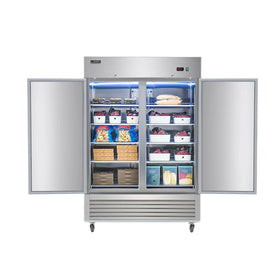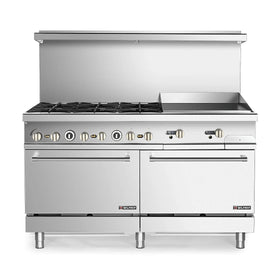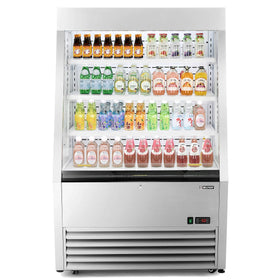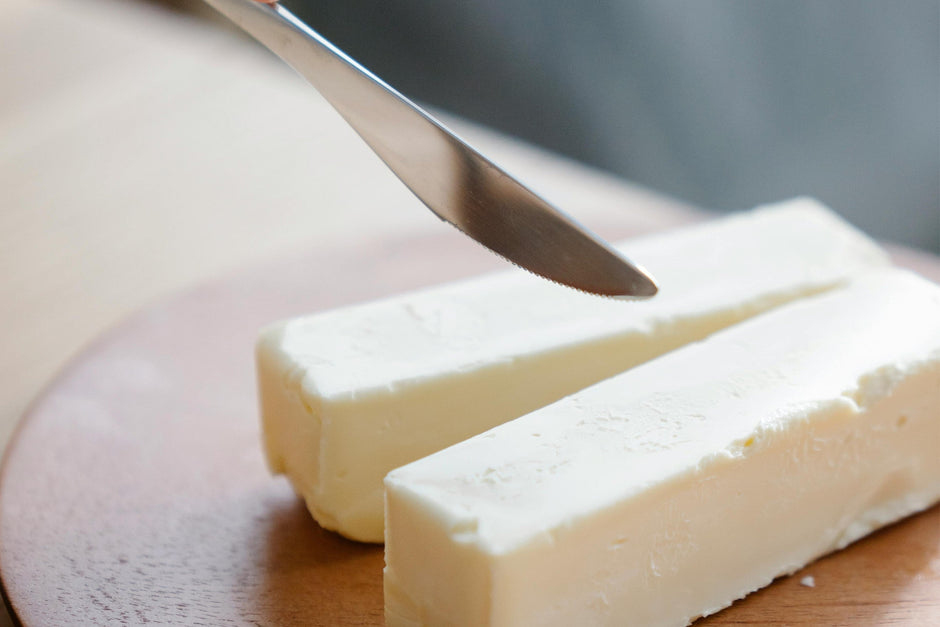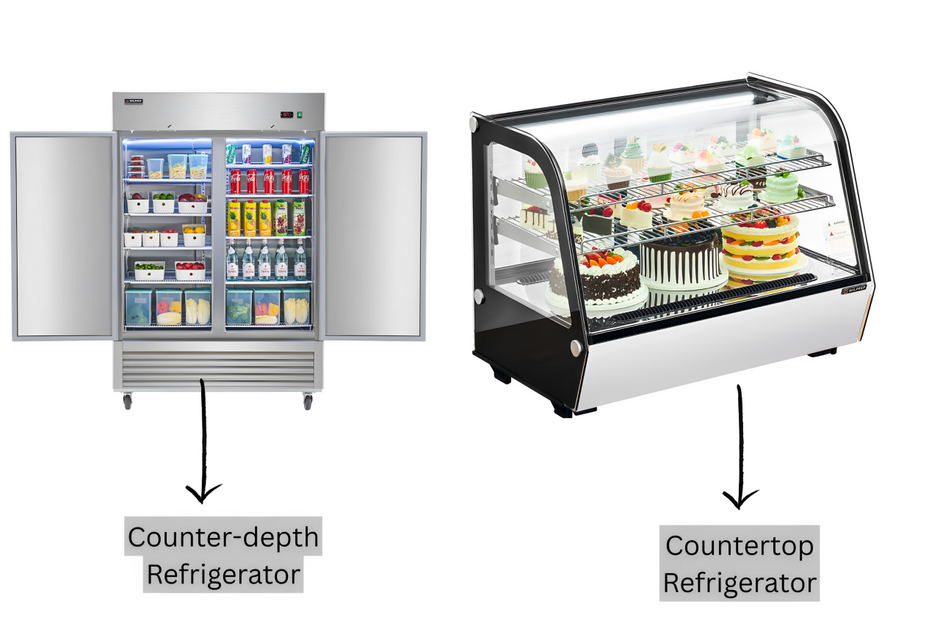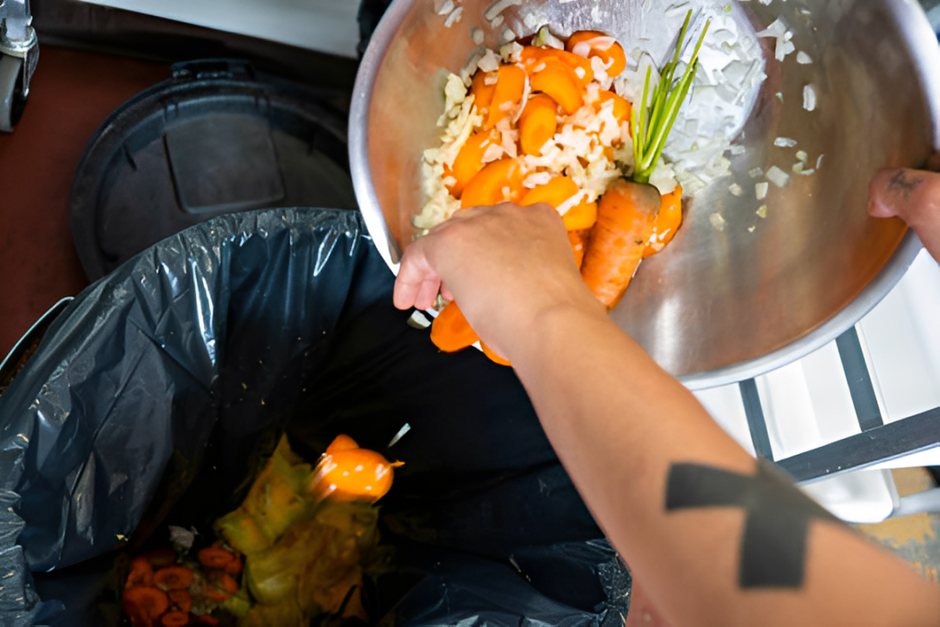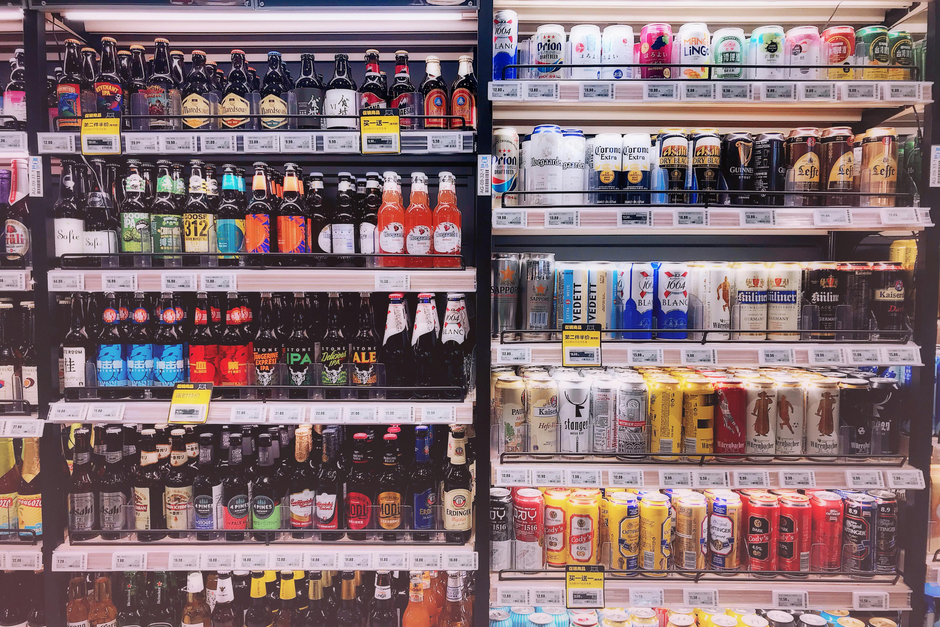If there is one thing that every person in the commercial food service industry would agree on, it is that keeping a commercial kitchen clean is a top priority. It is a matter of food safety, staff well-being, and staying in compliance with health codes.
A dirty kitchen can lead to food contamination, pests, or even (heavens forbid), a failed health inspection!
But the good news is, you don't have to pay a load of money for professional commercial cleaning services: at least not all the time. If you know where to start and what cleaning solution to use, you can do a lot of the cleaning yourself.
Let’s break it all down.

Should You Clean a Commercial Kitchen Yourself or Hire Professional Cleaning Services?
At least 85% of the cleaning in a commercial kitchen can and should be done in-house on a daily or weekly basis.
Your staff should be trained to follow a structured cleaning routine to prevent the buildup of grease, mold, and bacteria.
However, there are certain tasks, like deep vent hood cleaning or grease trap maintenance, that require specialized tools, certification, or training. Licensed professionals should handle these.
So the rule of thumb is:
- Daily and weekly tasks? Do them yourself.
- Tasks involving fire safety, deep ductwork, or grease traps? Call the pros.
What Items Should You Clean by Yourself?
When it comes to cleaning a commercial kitchen, it is essential to consider which items require specialized cleaning and which can be cleaned by the staff.
Here is a table of items you can clean in your commercial kitchen:
| Item | Can You Clean It? | Cleaning Frequency | How to Clean It |
| Prep counters & cutting boards | Yes | Daily, after every use | Use food-safe sanitizers; scrub with a brush and hot water. |
| Sinks and dishwashing stations | Yes | Daily | Scrub with degreaser; descale as needed; sanitize with bleach solution. |
| Floors (non-slip tile or rubber) | Yes | Daily sweep/mop; Weekly deep scrub | Use a degreasing floor cleaner and power scrub weekly to prevent grease buildup. |
| Fridge/Freezer (interior & exterior) | Yes | Exterior daily; Interior weekly | Remove all contents, clean with warm, soapy water, and sanitize food-contact surfaces. |
| Ovens and ranges | Yes | Daily surface clean; Weekly deep clean | Scrape off food residue, wipe down with degreaser, and clean burners. |
| Microwaves, toasters, and blenders | Yes | Daily | Wipe outside; clean removable parts with hot water and soap. |
| Shelves and dry storage units | Yes | Weekly | Dust and sanitize using disinfectant wipes or spray. |
| Small kitchen tools/appliances | Yes | After each use | Detach blades and parts; wash with warm, soapy water; sanitize. |
| Trash and recycling bins | Yes | Empty daily; wash weekly | Disinfect with a bleach solution; scrub inside and out. |
Pro Tip: Use color-coded cloths or sponges for different areas to avoid cross-contamination.
Also, if your commercial kitchen is made of stainless steel, it would be a lot easier to clean. For a commercial kitchen, especially, you want commercial refrigerators and freezers made of stainless steel: both interior and exterior.
With Embraco compressors, copper evaporators, adjustable shelves, and auto-defrost designs, Wilpreps reach-in refrigerators are designed for minimum maintenance and maximum performance in a busy commercial kitchen.
What You Should Not Clean by Yourself?
Avoid attempting to clean:
- Grease traps
- Ventilation and hood systems
- Pest-contaminated areas
- Walk-in condenser coils and evaporators (unless trained)
What’s the Right Order to Clean a Commercial Kitchen?
There are two important mistakes to avoid when cleaning your commercial kitchen on your own: cross-contamination and repetition.
The best way to avoid cleaning the same area twice or causing cross-contamination is to follow the top-to-bottom, back-to-front method.
Follow this order when cleaning your commercial kitchen:
-
Ceilings and Overhead Vents
Start at the top to knock down dust and debris before it falls on clean surfaces. -
Walls and High Surfaces
Degrease splatters near fryers and ovens. -
Appliances (Exterior First, Then Interior)
Focus on hot surfaces, such as ranges and fryers, followed by cold units, like refrigerators. -
Prep Surfaces & Counters
Wipe down surfaces with sanitizers, especially in areas where food is prepared. -
Sinks and Faucets
Clean, descale, and rinse thoroughly. -
Floors
Sweep, degrease, and mop - always last to avoid recontamination.
How to Deal with Tough Commercial Kitchen Cleaning Problems
Cleaning a commercial kitchen can be especially difficult if you have to deal with grease, mold, or stains on stainless steel (yes, it does happen).
To address these issues, you need specialized cleaning solutions, such as a commercial-grade degreaser, a bleach-based cleaner, or the ever-reliable baking soda solution.
1. How to Deal with Grease in a Commercial Kitchen
Grease is your #1 enemy in a commercial kitchen. It can create slip hazards, attract pests, and even spark fires. To handle grease in a commercial kitchen, use a commercial-grade degreaser. These are designed specifically to deal with grease in a commercial kitchen, and they work efficiently.
Here’s how to use a commercial-grade degreaser:
- Spray it on greasy areas,
- Let it sit for 5–10 minutes,
- Then scrub with a stiff brush. Use hot water when scrubbing as it helps loosen stuck-on grease.
Pro Commercial Kitchen Cleaning Tip:
Clean fryer filters and grates regularly. Soak them in boiling water with a degreaser for better results.
2. Dealing with Mold in a Commercial Kitchen
Mold can grow anywhere moisture lingers, under sinks, inside coolers, or in drain pans. Fortunately, there is an effective and inexpensive way to deal with mold in a commercial kitchen:
- Use a bleach-based cleaner on non-porous surfaces. The mixture should be 1 part bleach to 10 parts water.
- Scrub the affected areas thoroughly
- Then dry completely to prevent regrowth.
- Take note that if you see black mold growing in hidden areas or your HVAC system, it’s time to bring in a professional.

3. Removing Stains from Stainless Steel
Stainless steel is durable, but it stains easily, particularly near sources of heat and water. Fortunately, you can either handle this problem using a dedicated stainless steel cleaner or with a mixture of baking soda and water.
Follow these steps:
- Make a paste with baking soda and water, or use a dedicated stainless steel cleaner.
- Wipe with the grain using a microfiber cloth.
- Avoid harsh abrasives or steel wool, as they can scratch the surface.
You can also apply a food-safe polish afterward to maintain shine and reduce fingerprint buildup.
Tips for Cleaning Commercial Kitchen Equipment
- Always unplug electrical appliances before cleaning.
- Disassemble when possible: Remove parts like blades, trays, knobs, etc.
- Avoid soaking motors or areas with electrical components.
- Use manufacturer-recommended cleaning agents for sensitive equipment.
- Label cleaned equipment to prevent cross-contamination or double work.
When Should You Call Professional Cleaning Services?
Some cleaning tasks go beyond what your team should handle. In the following scenarios, call in professional cleaning services.
| Item | Why It Requires a Pro |
| Vent Hoods & Exhaust Systems | Involves fire hazards and grease buildup in the ductwork. Professionals use certified equipment. |
| Grease Traps | Must be cleaned and disposed of following local codes; requires specialized tools and permits. |
| Pest-Contaminated Areas | Requires licensed exterminators and follow-up sanitization. |
| Walk-in Cooler Coils & HVAC | Risk of damaging refrigerant lines; cleaning requires technical skill. |
| Heavy Equipment Steam Cleaning | Professionals use high-temperature steamers and vacuums to sanitize deep areas. |
| Post-Flood, Fire, or Biohazard Events | Needs certified cleanup and insurance compliance. |
| Severe Mold Infestation | Deep-rooted mold can be harmful and requires containment and professional removal. |
Final Thoughts: Cleaning Smarter, Not Just Harder
Running a commercial kitchen is hard work, but keeping it clean doesn’t have to be overwhelming. By establishing a consistent routine and knowing when to delegate to professionals, you can protect your business, your staff, and your customers.
A clean kitchen is a safe kitchen, and that’s good for your reputation and your bottom line.
You might be interested in this conversation about working with industrial kitchens vs. commercial kitchens.


